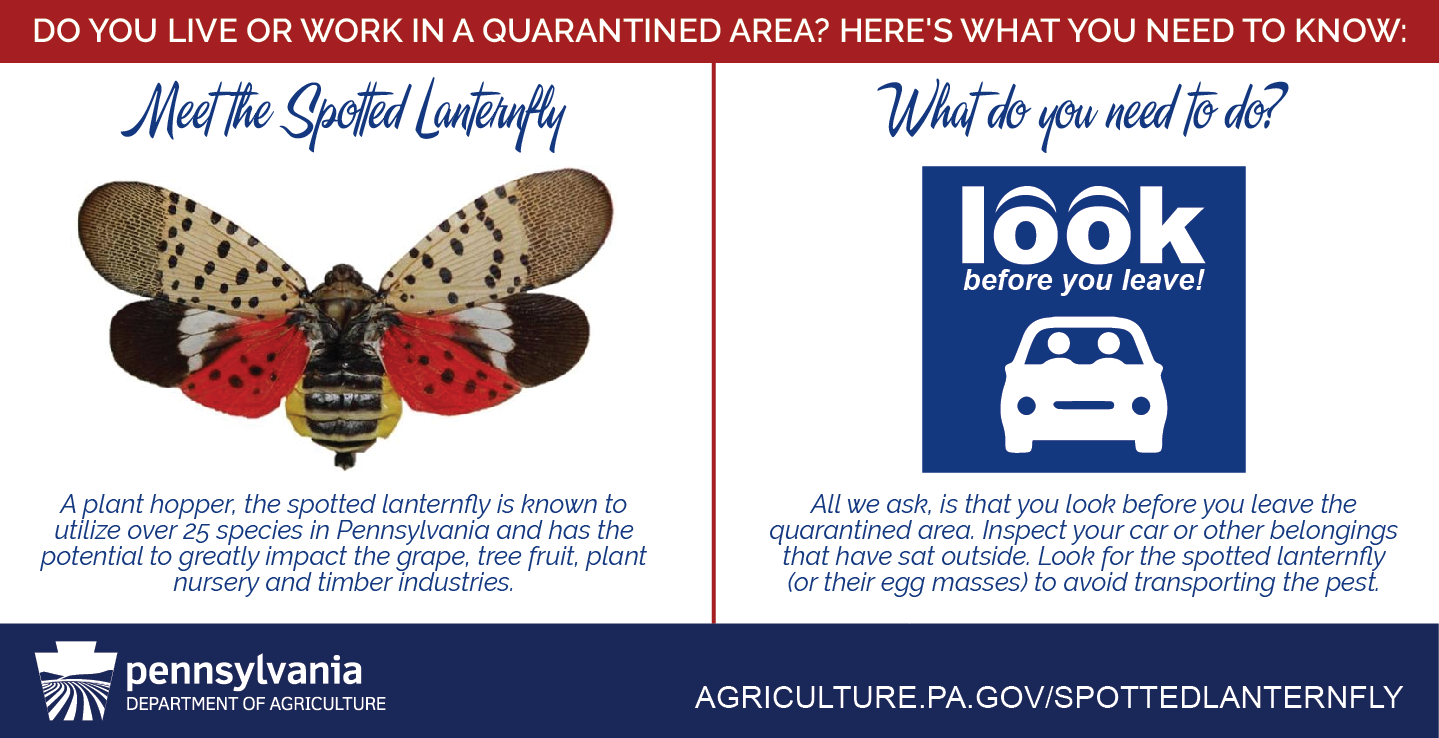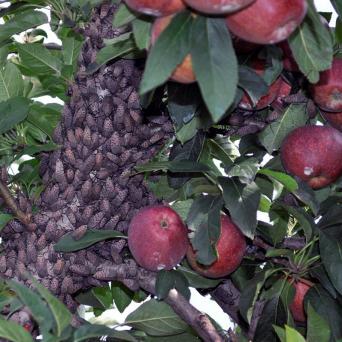
Spotty Lanternfly Is a Lovely — and Dangerous — Invader

by Brenda Malinics, for the Shuttle
Don’t be fooled by its beauty. You might think you are seeing a new butterfly gracing your yard, but those brilliant colors and striking markings signify a new, dangerous and invasive pest.
The spotted lanternfly, which is the size of a large moth or small butterfly, strikes fear into those who understand how its presence will affect our agriculture and hardwood industries. Folks say it will cause more destruction than the emerald ash borer, which has killed the majority of ash trees in Pennsylvania.
According to the Pennsylvania Department of Agriculture, the spotted lanternfly poses a significant threat to the state’s grape, apple and stone-fruit harvests, which are worth nearly $175 million, as well as the state’s multibillion-dollar hardwood industry.
This fancy plant hopper, a native of China, India and Vietnam, was first detected in Pennsylvania in Berks County in Fall 2014. It quickly spread to Bucks, Chester, Lehigh, Montgomery and Northampton counties.
I’ve been hearing about this pest for almost a year, and over Labor Day, I got to see it in person. Fortunately, it was in a jar, caught by informed property owners in Bucks County. I was surprised how delicate and beautiful it looked. This lovely appearance may trick people into not killing it. However, the public needs to become educated in to how to spot, report and ultimately destroy this pest at all stages of its life.
Adult lanternflies are about an inch long and a half-inch wide when folded up at rest. The lanternfly’s forewing is gray with black spots, and the wingtips have a net-like appearance in black and gray. The hind wings have contrasting patches of red and black with a white band between them, not visible when they are folded up. The legs and head are black, and the abdomen is yellow with broad black bands. Immature stages, called nymphs, are first black with white spots and then develop red patches as they grow.
Lanternflies’ favorite food and egg-laying host is Tree of Heaven (Ailanthus altissima) — another invasive species from Asia, now firmly entrenched in Pennsylvania. However, any smooth surface, from trees to vehicles, yard furniture, farm equipment and other items stored outside can act as sites for egg laying. Adult lanternflies begin laying eggs in late September and continue through late November or early December. The state has issued guidelines about buying, inspecting and relocating firewood and transporting brush piles, yard waste and even construction materials since so many counties are listed as “ under quarantine.”
The U.S. Department of Agriculture last summer funded control efforts and public outreach in Pennsylvania. Because insecticides also have deadly affects on valuable pollinators, the state is using integrated pest management. One of the recommended solutions is wrapping trees with large bands of sticky tape, but this tape also catches a variety of other wildlife, often with deadly consequences. I am aware of bats and birds (even a red-tailed hawk) that became stuck to these wrapped trees.
I urge everyone to learn about the devastating effects of the Spotted Lanternfly, including the warning signs that lanternfly nymphs are chewing their trees in the spring. We need to recognize the Spotted Lanternfly’s egg masses, its nymphs and its adults. We need to know to collect specimens and how to report and kill them.
To learn more, see photos and get informed, contact these agencies:
- Pa. Department of Agriculture: www.agriculture.pa.gov
- Penn State Extension: extension.psu.edu/Spotted-Lanternfly or 888- 4BADFLY (888-422-3359).
Brenda Malinics is a wildlife rehabber and cat rescuer. Reach her at brendasrescues@gmail.com.

